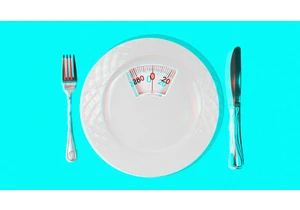Substack and Patreon are vying to become creators’ primary revenue stream.
For most influencers, payouts from platforms like Meta or Google aren’t enough to build a sustainable career. Rather than spending their days hawking products, many creators are turning to direct fan support, and two companies dominate that space: Patreon and Substack.
Patreon’s latest move targets streamers. Its native livestreaming feature, currently in demo and set for a broad rollout this summer, could attract gamers and broadcasters alike. But Substack beat them to it, launching a similar live video tool just three months earlier. As the two platforms expand their offerings, the rivalry for creator loyalty is heating up.
The market for creator livestreams
Video already performs well on the platform: It’s Patreon’s second-highest-earning media category after podcasting. Many Twitch streamers rely on Patreon as a more stable source of subscription revenue, preferring it to Twitch’s unpredictable payouts. With the addition of live video, Patreon is betting that more of these streamers will shift even larger parts of their operations to its platform.
“Creators can use livestreams to attract new free members, but they can also use it to encourage free members to pay to ‘upgrade to unlock’ a Live so that creators are earning the most from their fans,” writes Drew Rowny, Patreon’s VP of Product, in an email to Fast Company. “Native livestreams will also be a part of our existing ticketed events experience on Patreon. Live will become a part of our tools that already convert 700,000 free memberships to paid each month.”
But Substack, which was founded four years after Patreon, already has the upperhand. The platform introduced livestreaming to top-performing creators in September, then expanded access sitewide in January. Video is now central to Substack’s strategy: 82% of its 250 highest-earning creators are using audio and video in their work.
Since its inception, Substack has been a refuge for journalists leaving legacy media—and its live video feature is now drawing in television anchors as well. Don Lemon and Jim Acosta both stream on Substack—and sometimes, they stream together. As of 2025, roughly one in three live videos on the platform are cohosted with another Substack creator. Earlier this month, former MSNBC host Chris Matthews announced he’ll be streaming there, too.
“The important thing about live video, community features, or any other publishing tools is that they aren’t just standalone features—they’re connected to a network that helps publishers grow both audience and revenue,” Substack cofounder Hamish McKenzie writes in an email to Fast Company. “That’s what Substack does exceptionally well.”
Who will win the creator subscription market?
Second-stream creator revenue has been Patreon’s domain for over a decade. But Substack has recently inched its way, courting TikTok creators with big-money incentives. To some extent, the budding strategy has worked. When Hannah Neeleman, the infamous trad wife behind Ballerina Farm, wanted to venture outside of TikTok, she started a Substack newsletter. So have a good many shopping influencers, wanting to more easily insert affiliate links. Not long ago, Patreon would have been these creators’ only option.
Of course, Substack doesn’t think of itself as a Patreon competitor. It wants to be known as a wider social media platform, and not just a subscription service—even if it continues to tout its five million paid subscriptions.
“Substack is a destination people visit specifically to discover new voices and find creators to subscribe to,” McKenzie says. “Users willingly engage with all content forms while there, whether it’s livestreaming, reading, watching videos, or listening to podcasts. In that sense, Substack is truly a 360-degree platform, offering creators everything they need. It’s more comparable to YouTube than to Patreon.”
That doesn’t mean Patreon is losing its grip. The company emphasizes that more than half of the $290 billion creator economy comes from direct-to-fan paid programs. The growth of other platforms could just be a sign of an expanding industry.
“We’re seeing more and more platforms helping creators to connect directly with their fans—which is a great thing for the creator economy,” Patreon’s Rowny writes. “Creators can build tighter communities, grow their audience more, and earn more income on Patreon. We’re laser-focused on helping creators manage and grow their direct-to-fan businesses.”
Jelentkezéshez jelentkezzen be
EGYÉB POSTS Ebben a csoportban

Welcome to the world of social media mind control. By amplifying free speech with fake speech, you can numb the brain into believing just about anything. Surrender your blissful ignorance and swall

Few periods in modern history have been as unsettled and uncertain as the one that we are living through now. The established geopolitical order is facing its greatest challenges in dec

The European Commission is coming for “SkinnyTok.”
EU regulators are investigating a recent wave of social media videos that promote extreme thinness and “tough-love” weight loss advice,

The infamous “Am I The A**hole?” subreddit is making its way to the small screen.
Hosted by Jimmy Carr, the new game show for Comedy Central U.K. will feature members of the public appea

Former employees of OpenAI are asking the top law enforcement officers in California and Delaware to s


Microsoft released its annual Work Trend Index report on Tuesday, which argued that 2025 is the year that companies stop simply experimenting with AI and start building it into key missions.
